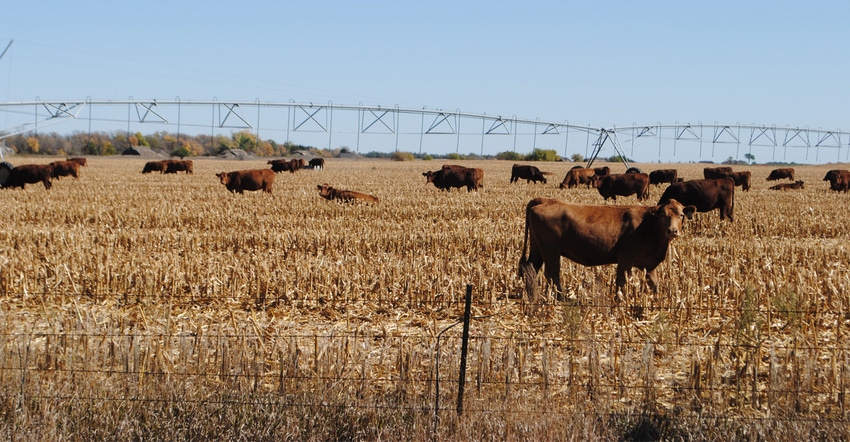January 19, 2022

Here in midwinter, cornstalks remain a great forage resource for livestock producers. Snow cover on the cornstalks is generally not a problem for cattle, as they are adept at digging their way through to get at the leaves, husks and remaining corn that they are seeking.
However, if an icy crust develops on the snow, this will limit grazing, and supplemental feed may need to be provided.
Another important consideration is the stocking rate and how long cattle have been in a particular field. Nutritional value of cornstalk residue is greatest at the beginning of a grazing period and declines with time as the most nutritious plant parts are grazed. A general stalk-grazing rule is there are about 30 cow days per 100 bushels of corn that the field produced.
Over the fall and winter, weathering can also play a role in reducing cornstalk quality. Rain or melting snow soaks into dry corn stalk residue and leaches out some of the soluble nutrients. Most serious is the loss of sugars and other energy-dense nutrients, which lowers the total digestible nutrients or energy value of the stalks.
Another factor that affects cornstalk grazing is wind. We have had our share of excessively high winds that easily blow corn leaves and husks off the field. This, of course, can affect the amount of feed, and after grain, those leaves and husks contain the highest nutritional quality.
Cornstalks are still a great and economical winter feed source. Just be sure to closely monitor cow and field conditions while adjusting your supplementation program accordingly.
Volesky is a Nebraska Extension range and forage specialist.
Source: UNL Forage and Pasture Minute, which is solely responsible for the information provided and is wholly owned by the source. Informa Business Media and all its subsidiaries are not responsible for any of the content contained in this information asset.
You May Also Like




